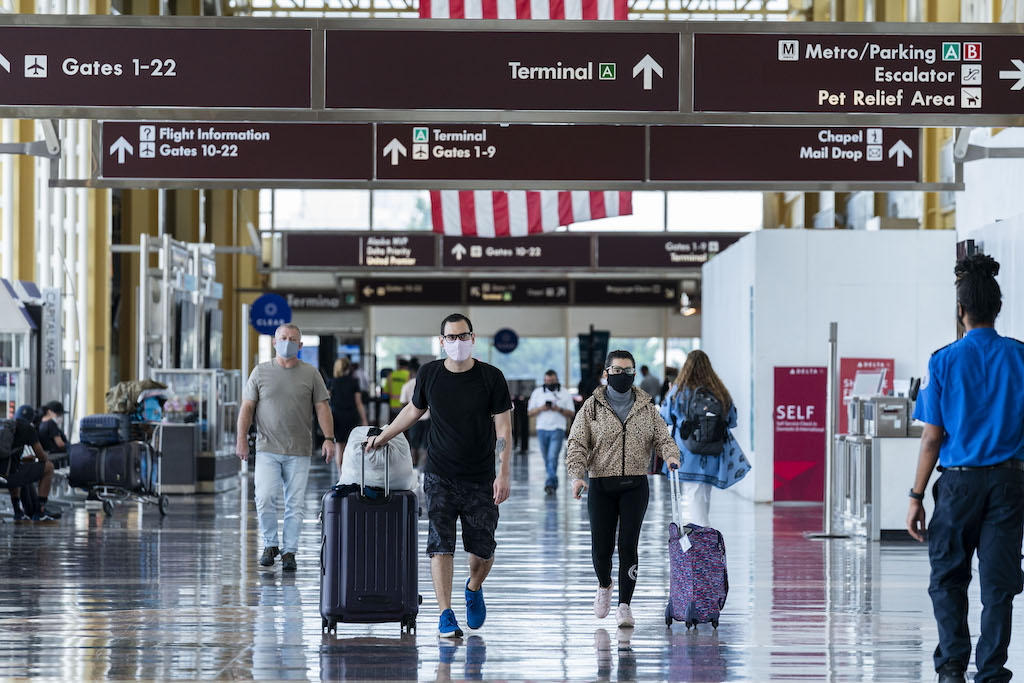American Airlines Forecasts Pent-Up Business Demand Could Exceed Pre-Covid Levels Starting Next Year

Photo Credit: American is betting on pent-up business demand return this fall. Flickr / IMF Photo/Cory Hancock
Much has been said about the pent-up leisure demand that is driving dramatic air traffic recoveries in domestic markets from Australia to China and the U.S. Now, American Airlines executives are embracing the idea of pent-up business travel demand that could replace holidaygoers and drive the recovery through the fall and winter.
Speaking at the Wolfe Research Transportation and Industrials Conference on Tuesday, American Chief Revenue Officer Vasu Raja said pent-up business demand exceeding 2019 levels could be a "reality" into early 2022 when asked by Wolfe Research Analyst Hunter Keay.
“There very much could be pent-up business demand because, if we are in a world where clients are ready to host client service-style businesses, it’s a question of making a sale or not," said Raja.
A strong return in corporate road warriors would be good news for the bottom lines of American, Delta Air Lines and United Airlines, all of which have bled red during the pandemic. Business travel is a large part of their businesses and critical to their respective recoveries. In April, United executives said the carrier needed business and long-haul international travel to recover to 65 percent of 2019 levels for the carrier to return to the black.
When and how much business travel recovers are critical questions for the industry. The consensus on when they begin returning in significant numbers is around September in the U.S., when leisure travel typically subsides with the start of a new school year. Corporate flyers are expected to return later in Europe where vaccination programs are moving slower.
However, Raja was clear that, while American is forecasting a September business travel recovery, it has few post-Labor Day bookings that would quantify the outlook.
Also, at this point, no one is talking about when long-haul business travel will return. The likelihood is that will be a 2022 phenomenon at best with airlines planning alternate uses for their long-haul jets in the meantime.
How much corporate demand returns is the million dollar question. Some executives, like Raja and United CEO Scott Kirby, believe the idea that corporate road warriors will come back with a vengeance once they are clear to hit the road. Others, like Southwest Airlines CEO Gary Kelly, think it could take between five to 10 years for at least U.S. domestic business travel to return to 2019 levels. The consensus is a 10-20 percent structural decline in business trips as a result of the widespread adoption of video conference technology.
Roughly 30 percent of business travel has returned at American, said Raja. Much of that is driven by small- and medium-sized businesses that have a greater need to get staff out in front of customers to make sales than do large corporations. The recovery also varies widely by sector and geography with more travelers from energy and industrial companies returning, and much travel focused on the south and west.
However, smaller businesses are not single-handedly driving the rebound. American Chief Financial Officer Derek Kerr said Tuesday that the bankers who managed the airline's $10 billion AAdavantage loyalty program securitization were the ones that met with the airline in person. This anecdote — while self-serving — gives further credibility to the idea that business travel will come back when companies begin losing sales to ones that did an in-person meeting.
Domestic holidaygoers on shorter trips are filling planes in the meantime. In fact, U.S. leisure travelers are returning so fast that, facing understaffing this summer, Transportation Security Administration (TSA) said Tuesday that it aims to hire another 1,000 screeners by July 4. Leisure fares at American, Delta and United have recovered too or are exceeding 2019 levels for summer travel.
“Candidly, it’s even faster than I thought," Delta CEO Ed Bastian said of the leisure travel recovery to staff in an internal webinar on May 19 viewed by Airline Weekly.
